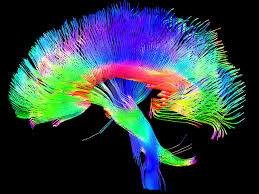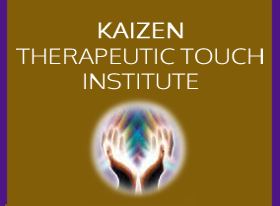 Taming the ‘monkey mind”, entering the stillness, quieting the mind, finding inner peace may all be ways of saying the same thing….the experience of Mindfulness, defined in 2003 by Jon Kabat-Zinn, who popularized it in North America as,
Taming the ‘monkey mind”, entering the stillness, quieting the mind, finding inner peace may all be ways of saying the same thing….the experience of Mindfulness, defined in 2003 by Jon Kabat-Zinn, who popularized it in North America as,
“Paying attention in a particular way on purpose, in the present moment, without judgment.”
So what happens when we do?
According to Mark Waldman, Ph.D and leading expert on communication, spirituality and the brain it is by managing our attention that we can control the amount of time we ruminate on negative thoughts. The human brain is wired to protect us and has evolved, over millennia, by continually scanning for threats, shifting wide focus attention in order for us to survive. This wide-focus attention, however, makes us more risk-averse than opportunities-aware. Life experiences – especially painful ones heighten the brain’s wide-focus scanning for threats and distractibility which, it appears, is the experience of those suffering from post traumatic stress disorder (PTSD).
Negative experiences create vicious cycles.
It’s easy to create a state of learned helplessness, but difficult to undo.
 The amygdala, a small almond-sized gland in the brain is programmed to keep us safe and strives to keep us in our comfort zone. It is also primed help us navigate the future by searching our memory for like-events (emotionally) and create habitual responses based on past performance, beliefs and self-image. The amygdala – hippocampus system flags negative experiences prominently in our memory which activates the stress response.
The amygdala, a small almond-sized gland in the brain is programmed to keep us safe and strives to keep us in our comfort zone. It is also primed help us navigate the future by searching our memory for like-events (emotionally) and create habitual responses based on past performance, beliefs and self-image. The amygdala – hippocampus system flags negative experiences prominently in our memory which activates the stress response.
So, even positive, intentional change can be seen by the amygdale as a threat to the status quo and activate stress. The negativity bias, in fact, has a ratio of 5:1. That means, to balance this skewed operational bias, you need to generate 5 positive, empowering thoughts for every negative, disempowering one…and that’s just to stay stress-free.
Waldman’s take on what actually happens in the pre-frontal lobes of our brain, is this:
“The prefrontal lobe (or the front area of your neocortex) is an area situated right above your eyeballs. It performs many cognitive and decision-making processes…The prefrontal cortex regulates emotional experiences and responses and sends information to nearly every other part of the brain. The lateral prefrontal cortex (above your eyes, away from the center fissure dividing left and right hemispheres is where we are consciously aware of the world. Surrounding areas help us choose a course of behavour by letting us assess the various alternatives mentally. The orbitofrontal cortex (just below the prefrontal cortex) is where our basic motivational desires seem to be turned into conscious decision-making processes.
Relax and Daydream
During concentration meditation, you see less  activity in prefrontal regions. In mindfulness, you see an expansion of activity across the prefrontal lobes. When you relax and daydream, your whole frontal lobes light up; this is essential for learning and memory formation.
activity in prefrontal regions. In mindfulness, you see an expansion of activity across the prefrontal lobes. When you relax and daydream, your whole frontal lobes light up; this is essential for learning and memory formation.
The two halves of the prefrontal cortex also seem to have specialized functions, with the left half being involved in establishing positive feelings and the right half in establishing negative ones. And indeed, in depressed people, it is the left prefrontal cortex that shows the greatest signs of weakness. In other words, when people are depressed, they find it very hard not only to set goals in order to obtain rewards, but also to believe that such goals can be achieved.
In healthy people, the left prefrontal cortex might also help to inhibit the negative emotions generated by limbic structures such as the amygdala, which show abnormally high activity in depressed patients. Contemplative meditation increases left activity and reduces right activity.
It is also interesting to note that when someone’s left prefrontal cortex is operating at full capacity, the levels of glucocorticoids (stress neurochemicals) in their blood are generally very low. This reduces anxiety and depression….
Diffusion scans show that there are no “parts” to the brain, just vast interconnecting organic networks of living  dendrites and axons connecting and disconnecting as you read this!”
dendrites and axons connecting and disconnecting as you read this!”
According to Jon Kabat-Zinn, “Knowing what you are doing while you are doing it is the essence of mindfulness training.”
Or, if you prefer, learn about mindfulness in healing. Learn Therapeutic Touch.
Commitment to everyday mindfulness practice cultivates authentic, personal leadership. You can do it. We can help. Let’s get started today.






I wish that I was like other people who's anxiety was connected to thoughts. Although my thoughts can make it worse. Thought types are almost always within my control. These days I spend hours a day superimposing good emotions into my experience to displace my relentless anxiety. Today I'm doing at least an hour of Heart Math and an hour and a half of yoga. I'll be letting you know if this plan works. No progress yet. Although my life continues to go well.